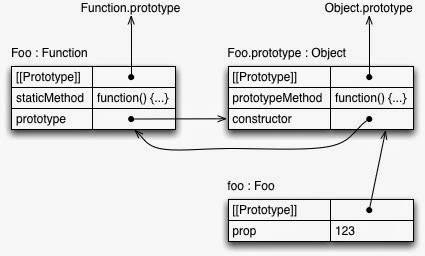javascript ES 6 class 详解
Posted Teng的世界
tags:
篇首语:本文由小常识网(cha138.com)小编为大家整理,主要介绍了javascript ES 6 class 详解相关的知识,希望对你有一定的参考价值。
javascript ES 6 class 详解
Introduction
上篇文章大致介绍了一些ES6的特性,以及如何在低版本浏览器中使用它们。本文是对class的详解。
译自Axel Rauschmayer的Classes in ECMAScript 6
另外,如果只是想测试ES6,可以到这个网站。
Overview
借助class 我们可以写出这样的代码:
class Point
constructor(x, y)
this.x = x;
this.y = y;
toString()
return '(' + this.x + ', ' + this.y + ')';
class ColorPoint extends Point
constructor(x, y, color)
super(x, y);
this.color = color;
toString()
return super.toString() + ' in ' + this.color;
let cp = new ColorPoint(25, 8, 'green');
cp.toString(); // '(25, 8) in green'
console.log(cp instanceof ColorPoint); // true
console.log(cp instanceof Point); // trueBase classes
我们可以定义如下的class:
class Point
constructor(x, y)
this.x = x;
this.y = y;
toString()
return '(' + this.x + ', ' + this.y + ')';
我们可以像使用ES5标准中的constructor一样实例化class
> var p = new Point(25, 8);
> p.toString()
'(25, 8)'实际上,class还是用function实现的,并没有为js创造一个全新的class体系。
> typeof Point
'function'但是,与function相比,它是不能直接调用的,也就是说必须得new出来
> Point()
TypeError: Classes can’t be function-called另外,它不会像function一样会被hoisted(原因是语义阶段无法解析到extends的内容)
foo(); // works, because `foo` is hoisted
function foo()
new Foo(); // ReferenceError
class Foo function functionThatUsesBar()
new Bar();
functionThatUsesBar(); // ReferenceError
class Bar
functionThatUsesBar(); // OK与函数一样,class的定义表达式也有两种,声明形式、表达式形式。之前用的都是声明形式,以下是表达式式的:
const MyClass = class Me
getClassName()
return Me.name;
;
let inst = new MyClass();
console.log(inst.getClassName()); // Me
console.log(Me.name); // ReferenceError: Me is not definedInside the body of a class definition
class定义体是只能包含方法,不能包含属性的(标准定义组织认为原型链中不应包含属性),属性被写在constructor中。以下是三种会用到的方法(constructor 、static method、 prototype method):
class Foo
constructor(prop)
this.prop = prop;
static staticMethod()
return 'classy';
prototypeMethod()
return 'prototypical';
let foo = new Foo(123);如下图([[Prototype]]代表着继承关系)当对象被new出来,拿的是Foo.prototype : Object分支,从而可以调prototype method

constructor,这个方法本身,代表了class
> Foo === Foo.prototype.constructor
trueconstructor有时被称为类构造器。相较于ES5,它可以调用父类的constructor(使用super())。
static methods。它们归属于类本身。
> typeof Foo.staticMethod
'function'
> Foo.staticMethod()
'classy'关于Getters and setters,它们的语法如下:
class MyClass
get prop()
return 'getter';
set prop(value)
console.log('setter: '+value);
> let inst = new MyClass();
> inst.prop = 123;
setter: 123
> inst.prop
'getter'方法名是可以动态生成的
class Foo()
myMethod()
class Foo()
['my'+'Method']()
const m = 'myMethod';
class Foo()
[m]()
增加了迭代器的支持,需要给方法前面加一个*
class IterableArguments
constructor(...args)
this.args = args;
* [Symbol.iterator]()
for (let arg of this.args)
yield arg;
for (let x of new IterableArguments('hello', 'world'))
console.log(x);
// Output:
// hello
// worldSubclassing
通过extends,我们可以继承其它实现constructor的函数或对象。需要注意一下,constructor与非constructor调用父类方法的途径是不同的。
class Point
constructor(x, y)
this.x = x;
this.y = y;
toString()
return '(' + this.x + ', ' + this.y + ')';
class ColorPoint extends Point
constructor(x, y, color)
super(x, y); // (A)
this.color = color;
toString()
return super.toString() + ' in ' + this.color; // (B)
> let cp = new ColorPoint(25, 8, 'green');
> cp.toString()
'(25, 8) in green'
> cp instanceof ColorPoint
true
> cp instanceof Point
true子类的原型就是它的父类
> Object.getPrototypeOf(ColorPoint) === Point
true所以,static method也被继承了
class Foo
static classMethod()
return 'hello';
class Bar extends Foo
Bar.classMethod(); // 'hello'static方法也是支持调用父类的。
class Foo
static classMethod()
return 'hello';
class Bar extends Foo
static classMethod()
return super.classMethod() + ', too';
Bar.classMethod(); // 'hello, too'关于子类中使用构造器,需要注意的是,调用this之前,需要调用super()
class Foo
class Bar extends Foo
constructor(num)
let tmp = num * 2; // OK
this.num = num; // ReferenceError
super();
this.num = num; // OK
constructors是可以被显示覆盖(override)的。
class Foo
constructor()
return Object.create(null);
console.log(new Foo() instanceof Foo); // false如果基类中不显示定义constructor,引擎会生成如下代码
constructor() 对于子类
constructor(...args)
super(...args);
The details of classes
- 类名不能为eval 或者 arguments,不能有重复的类名,constructor不支持getter,setter。
- classes不能像函数一样调用。
- 原型方法不能用作构造器:
class C
m()
new C.prototype.m(); // TypeErrorThe details of subclassing
ES 6中,子类的使用方法如下:
class Point
constructor(x, y)
this.x = x;
this.y = y;
···
class ColorPoint extends Point
constructor(x, y, color)
super(x, y);
this.color = color;
···
let cp = new ColorPoint(25, 8, 'green');原型链实现:
> const getProto = Object.getPrototypeOf.bind(Object);
> getProto(Point) === Function.prototype
true
> getProto(function () ) === Function.prototype
true
> getProto(Point.prototype) === Object.prototype
true
> getProto() === Object.prototype
true
原文链接:
http://www.cnblogs.com/E-WALKER/p/4796278.html
以上是关于javascript ES 6 class 详解的主要内容,如果未能解决你的问题,请参考以下文章